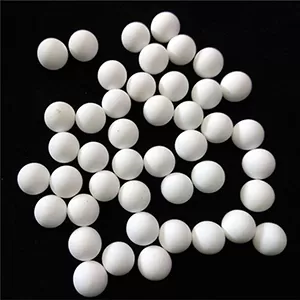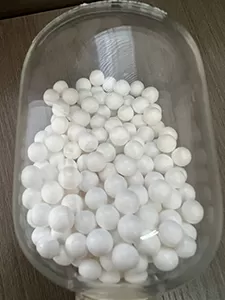Selecting ceramic ball milling media involves considering material properties, grinding requirements, and equipment conditions, with key factors including hardness, density, size, and chemical compatibility to ensure efficient and cost - effective grinding. The right choice directly impacts grinding efficiency, product quality, and media lifespan, making it a critical decision in industrial milling processes.

Material hardness is a primary consideration, as it determines the media’s ability to grind tough materials. Silicon carbide ceramic balls, with a Mohs hardness of 9.5, are ideal for grinding hard ores, ceramics, and refractory materials, as they resist wear even when processing abrasive substances. For softer materials like pigments or pharmaceuticals, alumina ceramic balls (Mohs hardness 9) offer a balance of hardness and cost - effectiveness, preventing over - grinding while maintaining efficiency. Zirconia ceramic balls, though slightly less hard (Mohs 8 - 8.5), are preferred for their toughness, making them suitable for brittle materials that require gentle grinding to avoid contamination.
Density influences grinding energy and efficiency. Higher density media, such as zirconia (6.0 g/cm³) and silicon carbide (3.2 g/cm³), deliver greater impact force, accelerating particle breakdown in high - energy milling. This makes them suitable for reducing coarse particles to fine powders. Lower density alumina (3.6 g/cm³) is better for applications where excessive impact could damage the material, such as grinding heat - sensitive or fragile substances.
Media size must match the feed material and desired product size. Larger balls (10 - 50 mm) are effective for breaking down coarse particles, while smaller balls (1 - 10 mm) are used for fine grinding to achieve sub - micrometer particle sizes. A mix of sizes can optimize efficiency: larger balls handle initial reduction, and smaller ones refine the product. The size ratio of media to mill chamber is also critical—typically 1:5 to 1:10—to ensure proper tumbling and avoid overcrowding, which reduces grinding effectiveness.

Chemical compatibility prevents contamination and material degradation. Ceramic media must resist reaction with the grinding material or any additives. For example, in pharmaceutical or food processing, inert zirconia or high - purity alumina is chosen to avoid leaching impurities. In acidic environments, silicon carbide’s chemical stability makes it a better choice than alumina, which may react with strong acids over time.
Grinding environment factors, such as wet or dry conditions, influence selection. Zirconia media performs well in wet milling due to its resistance to corrosion and abrasion in aqueous solutions. Silicon carbide is suitable for dry grinding of high - temperature materials, as it maintains hardness at elevated temperatures. Alumina works in both environments but may wear faster in highly acidic or alkaline wet processes.
Cost and lifespan are practical considerations. While silicon carbide and zirconia offer superior performance, they are more expensive than alumina. For large - scale, continuous operations where media replacement is costly, investing in longer - lasting zirconia or silicon carbide can reduce overall expenses. For low - volume or less demanding applications, alumina provides a cost - effective solution.
Equipment specifications, such as mill type (ball mill, attritor mill) and rotational speed, affect media choice. High - speed mills require durable media like zirconia to withstand increased impact forces, while slower ball mills can use alumina effectively. Matching media properties to mill design ensures optimal energy transfer and prevents excessive wear on both media and equipment.
In summary, selecting ceramic ball milling media requires balancing hardness, density, size, chemical compatibility, and cost, tailored to the material being ground and process conditions. A well - chosen media enhances grinding efficiency, ensures product quality, and minimizes operational costs.



